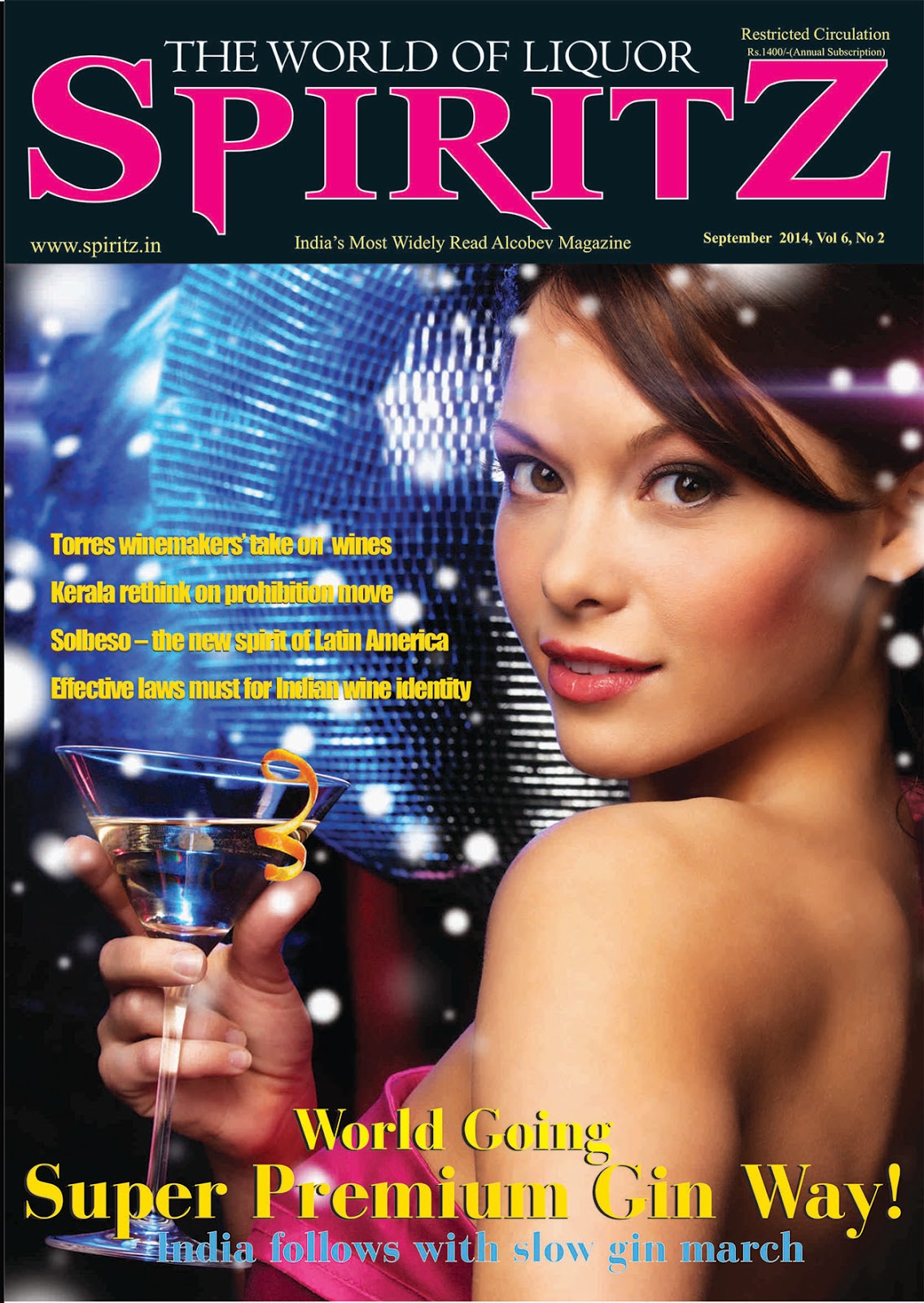 |
| 'Spiritz' focus issue on Gin |
"Gin and General" is more than just a headline. It symbolises the beverage's integration within the Forces culture ever since it originated as "Genever" in a quaint town of Netherlands in the 16th century. This was the time when the British and Dutch were fighting the same battles in the Dutch/Spanish war and Genever drinking was a popular practice amongst soldiers before the battle. Officers designated this as ‘Dutch Courage’- a phrase that is popular even today. The British Navy transported Genever (renamed Gin by them) in copious amounts back home, as also to the British colonies across the world. No Officers Mess of a Commonwealth nation has been without Gin ever since.
Recently when. Bishan Kumar, Group Editor Blue Ink Media, called me up with a proposal to do the subject story for Spiritz Magazine's focus issue on Gin, my immediate response was of exuberance. Not because Gin is one of my favourite afternoon drinks, but due to the prospect of interviewing one of my awe inspiring former bosses. And the obvious name that came to my mind was Gen Ajay Chandele – one of the most stylish and articulate Generals with whom I was privileged to be a brother in arms- albeit a much younger one.
 |
| Lt Gen Ajay Chandele, PVSM,AVSM (Retd) at his home bar ready to host guests. |
I touched base with the General and soon enough we were at the Noida Golf course to converse on a subject none of us could have imagined as coming up for discussion a few years back. Inquisitiveness had the better of me as I started pronto, asking him about his maiden experience with Gin in the Army. “As a cadet at the Indian Military Academy, my father was posted on the instructional staff (of the Academy). My mother would occasionally invite some of my company course mates to lunch on Sundays and we got an opportunity to sneak a swig with them, courtesy my younger brother who was always playing the perfect host” says the General with an impish gleam in his eyes. “The association with Gin thereafter has been forever”, he adds. But isn’t Gin considered an afternoon drink in the Army? There is a strong logic behind it- he explained. Afternoon games are an essential part of army cantonment routine, so heavy drinking before lunch is usually avoided. However, a pre- lunch Gin and tonic helps build appetite and is the preferred drink during day time.
 |
| Gen Chandele in action at Golf Course |
His favourite gin brands are Beefeater and Bombay Sapphire. But in Defence institutions, it is largely the Blue Riband that rules, due to its easy availability in CSD .
But hasn’t vodka overwhelmed Gin in the past few years? Even the James Bond specifies a vodka Martini in an emphatic indicator of changing tends. The General does not agree though - “ Gin is the preferred base for most cocktail recipes in Army messes. Our bartenders are more comfortable with Gin and can whip up many delightful concoctions.”
It is Mrs Chandele’s phone call and it is no secret that even Generals have to take a halt to pick up the
phone when the wife calls. I use the opportunity to feast my eyes on the lush greenery around along with munching the pristine white pearl onion with a few swigs of the Gin. We resume shortly with my next question: Are army ladies also favourably disposed towards Gin? Answering in the affirmative. “Gin and tonic is by far the most popular with army ladies, but with the cocktail culture picking up, some of the younger ones prefer vodka and the non initiated stick to Bacardi Breezers,” says the General.
phone when the wife calls. I use the opportunity to feast my eyes on the lush greenery around along with munching the pristine white pearl onion with a few swigs of the Gin. We resume shortly with my next question: Are army ladies also favourably disposed towards Gin? Answering in the affirmative. “Gin and tonic is by far the most popular with army ladies, but with the cocktail culture picking up, some of the younger ones prefer vodka and the non initiated stick to Bacardi Breezers,” says the General.
It’s time for the General to leave for a board meeting and knowing well that he is now a man wearing different hats, I sneak in a concluding question: How does he perceive the 'Gin factor' as having changed in his multi-role civilian avatar of Managing Editor of a niche magazine, a decision maker in the Indian Golf Union and a Board member of a technology giant?
“My golfing colleagues prefer Gin over other spirits, unless beer is part of the bet. The board room types like to stick to their chota Gin during day , not much work can be done after beer,” he shares the gin habits of the people around him.
Clicking my heels with arms stretched in attention ( the Forces way of saluting while in civvies) I thank the General with the hope of hosting him to a Negroni with Bombay Sapphire soon enough!
















